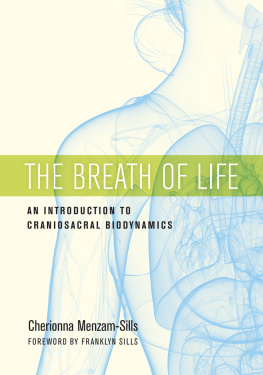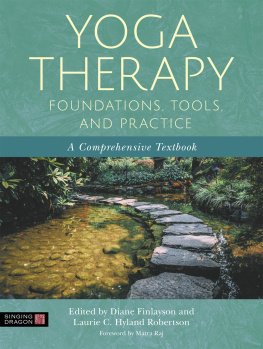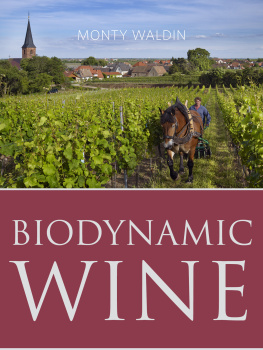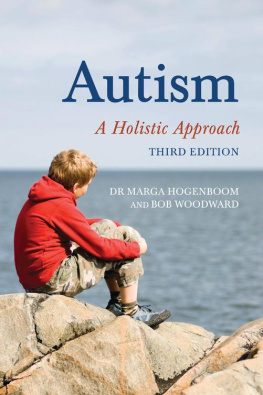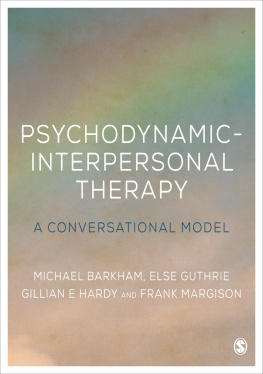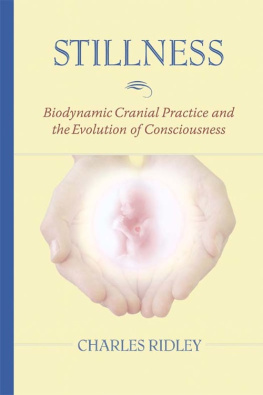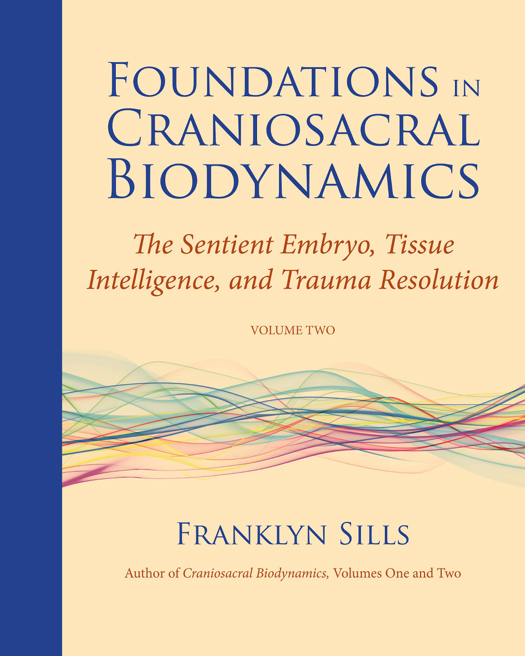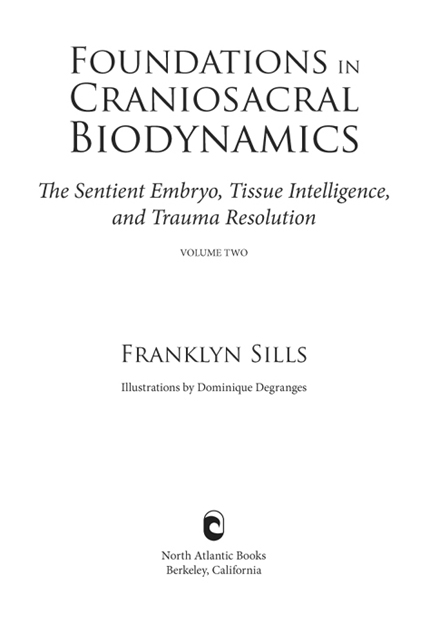Other books by Franklyn Sills
Being and Becoming: Psychodynamics, Buddhism, and the Origins of Selfhood
Craniosacral Biodynamics, Volume One: The Breath of Life, Biodynamics, and Fundamental Skills Craniosacral Biodynamics, Volume Two: The Primal Midline and the Organization of the Body
The Polarity Process: Energy as a Healing Art
Foundations in Craniosacral Biodynamics, Volume One: The Breath of Life and Fundamental Skills
Copyright 2012 by Franklyn Sills. All rights reserved. No portion of this book, except for brief review, may be reproduced, stored in a retrieval system, or transmitted in any form or by any meanselectronic, mechanical, photocopying, recording, or otherwisewithout the written permission of the publisher. For information contact North Atlantic Books.
Published by
North Atlantic Books
P.O. Box 12327
Berkeley, California 94712
Cover photo iStockphoto.com/SABarton
Cover design by Jan Camp
MEDICAL DISCLAIMER: The following information is intended for general information purposes only. Individuals should always see their health care provider before administering any suggestions made in this book. Any application of the material set forth in the following pages is at the readers discretion and is his or her sole responsibility.
Foundations in Craniosacral Biodynamics: The Sentient Embryo, Tissue Intelligence, and Trauma Resolution is sponsored by the Society for the Study of Native Arts and Sciences, a nonprofit educational corporation whose goals are to develop an educational and cross-cultural perspective linking various scientific, social, and artistic fields; to nurture a holistic view of arts, sciences, humanities, and healing; and to publish and distribute literature on the relationship of mind, body, and nature.
North Atlantic Books publications are available through most bookstores. For further information, visit our website at www.northatlanticbooks.com or call 800-733-3000.
The Library of Congress has cataloged the printed edition as follows:
The first volume of this series was catalogued under the following information:
Sills, Franklyn, 1947
Foundations in craniosacral biodynamics / Franklyn Sills; illustrations by Dominique Degranges.
p.; cm.
Includes bibliographical references.
Summary: Biodynamic Craniosacral Therapy (BCST) is commonly seen as the spiritual approach to craniosacral therapy (CST); in fact, BCST as taught by Franklyn Sills, the pioneer in the field, is quite different from conventional CST. Biodynamic work is based on the development of perceptual skills where the practitioner learns to become sensitive to subtle respiratory motions called primary respiration and also to the power of spontaneous healing. Through the Breath of Life, which, Sills asserts, echoes the Holy Spirit in the Judeo-Christian tradition, bodhicitta in Buddhism, and the Tai Chi in Taoism, students of BCST learn to enter a state of presence oriented to the clients inherent ability to heal. In Foundations in Craniosacral Biodynamics, Sills offers students and practitioners an in-depth, step-by-step guide to the development of perceptual and clinical skills with specific clinical exercises and explorations to help students and practitioners learn the essentials of a biodynamic approach. Individual chapters cover such topics as holism and biodynamics; mid-tide, Long Tide, Dynamic Stillness and stillpoint process; the motility of tissues and the central nervous system; transference and the shadow; shamanistic resonances; and moreProvided by publisher.
eISBN: 978-1-58394-521-6
1. Craniosacral therapy. I. Title.
[DNLM: 1. Musculoskeletal Manipulationsmethods. 2. Mind-Body Relations, Metaphysical. 3. Mind-Body Therapiesmethods. 4. Sacrumphysiology. 5. Skullphysiology. 6. Spiritual Therapiesmethods. WB 535]
RZ399.C73S56 2011
615.82dc22
2011000210
v3.1
ACKNOWLEDGMENTS
I would like to acknowledge the feedback given to me by tutors at Karuna on the wording of certain areas of description, including the augmentation visceral sections. I would like to also acknowledge the contribution of my wife, Cherionna Menzam-Sills, who wrote the important and formative second and third chapters in this volume. Cherionna is a senior biodynamic craniosacral teacher in the USA and Canada; she has her MA in somatic psychology and her PhD in pre- and perinatal psychology. She has worked deeply in these areas and her contributions in this volume on the sentient embryo and the importance of the pre- and perinatal period in our relational life and personality development point to key aspects of work in this field.
I would also like to acknowledge the wonderful work of Dominique Degranges in his illustrations for this volume. Dominique is director of a training center in Winterthur, Switzerland, is a senior tutor in craniosacral biodynamics, and runs courses and trainings in pre- and perinatal psychology and therapy. He is an old friend and colleague in this wonderful work we do.
I would also like to deeply acknowledge my former wife, Maura Sills. Maura and I are still co-directors of the Karuna Institute, which offers training both in craniosacral biodynamics and in core process psychotherapy, a truly integrated mindfulness-based psychotherapy form. Maura supports my work in many ways and we both are still involved in the running of the Institute and the raising of our younger daughter, Ella, a truly brave and lovely being. I also would like to acknowledge my older daughter, Laurel, who always reminds me of the goodness and joy in my life.
Finally I would like to appreciate North Atlantic Books for the support of my writings over the years. North Atlantic Books has become an important haven for writings in the cranial field, psychology, and the healing of trauma in our lives.
CONTENTS
ILLUSTRATIONS
INTRODUCTION
I believe osteopathys orientation to health is unique in Western medicine. Andrew T. Still, the founder of osteopathy, consistently directed his students to listen for health as a starting point. Emphasizing health challenges our prevailing modern medical culture, which has a combative and aggressive preoccupation with disease. Stills words inspire a deep examination of what health is and how to hear its constant call. An orientation to health deeply shifts the clinicians intentions and clinical work and is something that must be developed and nurtured over time. In this process, it can be very hard to shift from our cultural conditioning. We tend to see disease as something to be conquered, thus polarizing our experience of health and illness. In a biodynamic context, health is perceived to be a deeper resource at work throughout life, centering the conditions present in the best possible fashion.
One role of the biodynamic practitioner is to orient to the expression of health via the presence and action of what the founder of the work, Dr. William Garner Sutherland, called the Breath of Life and its unerring potency. As I have oriented to this principle over many years, I have learned that the decisions about what has to occur in a persons healing process is not up to me to determine. The knowledge of the healing needs of the clientand the precise sequence of their unfoldmentis already present in the forces and conditions at work, which if oriented to, will lead the way.



